
Purchase Tickets
Hoosier Experiences of the 1869 Solar Eclipse
April 1, 2024
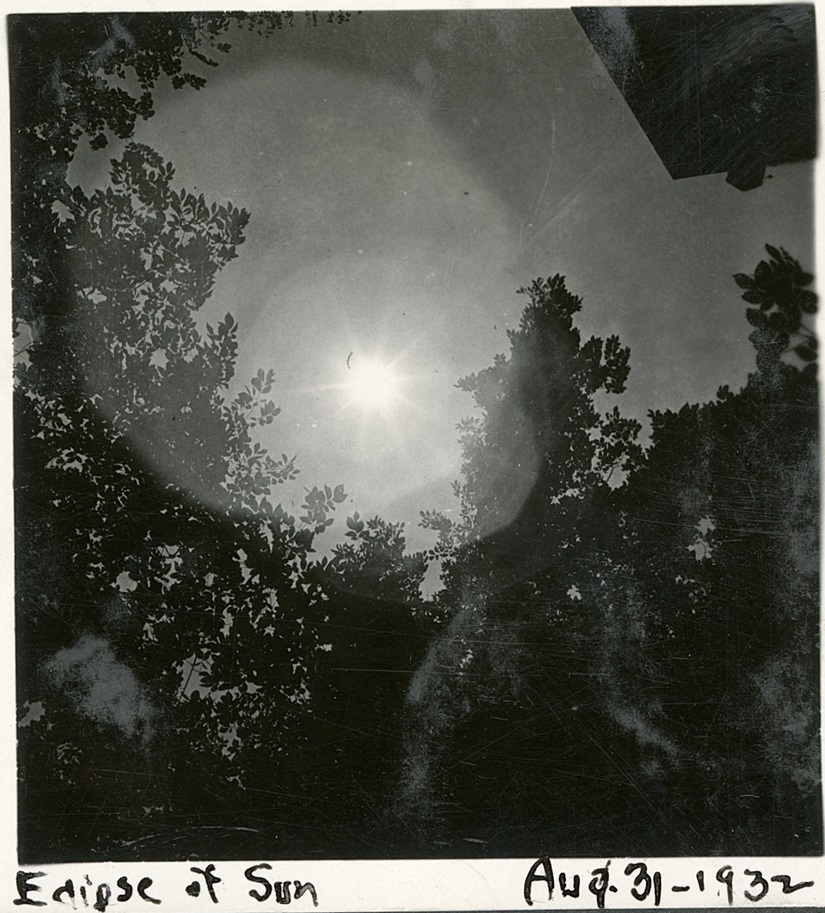
From hosting viewing parties to welcoming the millions of visitors expected to travel to the state, Hoosiers are preparing for the upcoming solar eclipse on April 8, 2024. However, April 8 will not be Indiana’s first “day in the sun,” so to speak, in regard to solar eclipses. Indiana has been in the path for several partial eclipses over the years, and although rare, has also been the site to view a total solar eclipse. For many areas of the state, August 7, 1869, was Indiana’s last total solar eclipse, with totality spreading across the southern and western portions of the state.
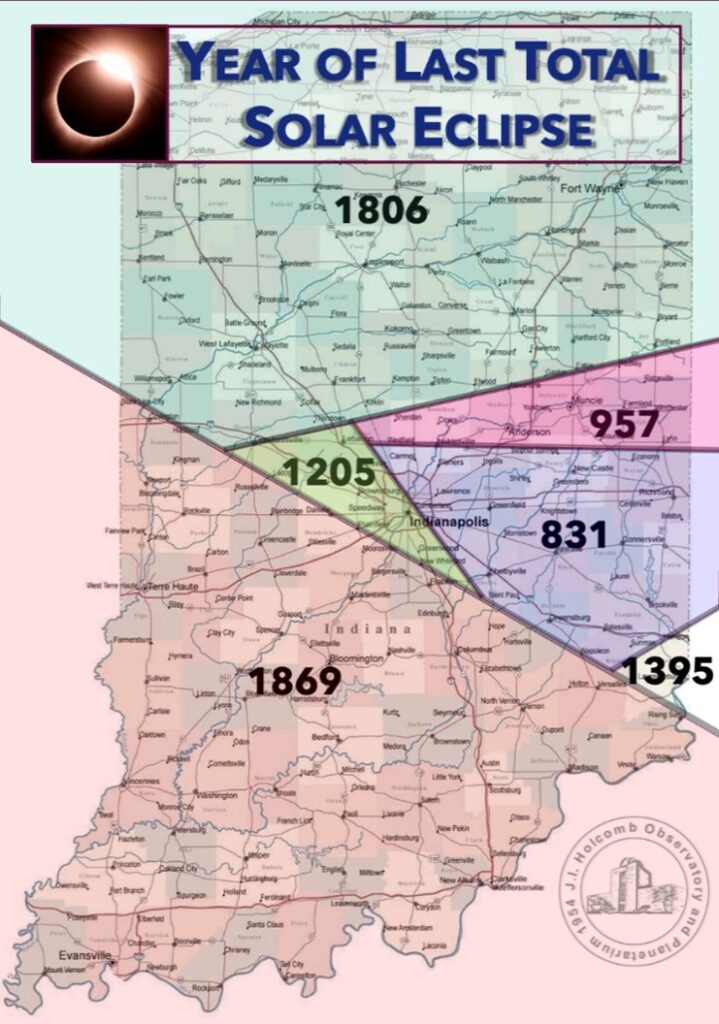
Map courtesy of Holcomb Observatory, Butler University
The Indiana Historical Society is fortunate to have several diaries, letters and journals documenting the August 7, 1869, eclipse, giving us a glimpse of how Hoosiers experienced the event nearly 155 years ago. From planning travel excursions to getting eyewear ready, it is fascinating to see how some of their experiences are similar to how Hoosiers today are gearing up for the event.
Indiana newspapers began highlighting the 1869 eclipse many months early, so Hoosiers with access to newspapers knew the date and even approximate time of the upcoming event. As the August 7th date drew closer, coverage began to increase. Many newspapers advised readers to “smoke” their glasses in advance to safely view the eclipse. Some indicate this was done by lamps and candles. Travel was also a consideration as communities began preparing for increased visitation. The Vincennes Railroad offered a special excursion for the day. Fifty cents covered round trip train fare from Indianapolis (who was to only have partial viewing) to Morgan County (who was to have totality). On the day of the eclipse, eleven “densely crowded” cars left Indianapolis at 2:30 to arrive just in time for the eclipse to begin in Martinsville.
From many accounts, the weather cooperated, with clear skies and warm temperatures. A letter from James Cathcart of LaPorte County describes the thermometer dropping during the eclipse to 68 degrees. He also noted chickens went to roost – a comment made in several descriptions. The impact of the eclipse on animals was frequently noted, from chickens going to roost to livestock returning to barns.
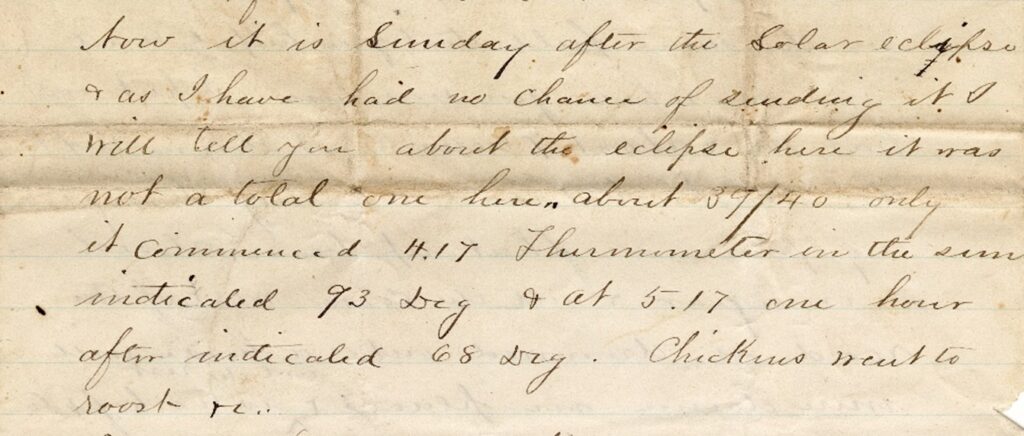
James Cathcart Letter, Indiana Historical Society, SC0183
Our most detailed account comes from a 9-page description from a Corydon resident:
The light was evidently waning and it was observed that some of the young fowls were seeking branches of trees. From this time the light of the sun perceptibly diminished + when in the shadows of buildings, it had much of the appearance of an approaching storm. The sun now cast a pale unnatural light unlike anything I can ever remember to have witnessed giving to the countenance of those around me an appearance almost ghostly___ the children that had been noisily playing became quiet – and something akin to a fearful anxiety marked the features of the grown. The mercury had touched 68 (degrees). The fowls were seeking their roost. The horizon was an orange tinge. The rays of this gorgeous orb that had so lately blazed forth his blinding glory was now nearly stripped of his power and all eyes were turned toward him [ … ] with breathless suspense to witness the (inner) contact ….
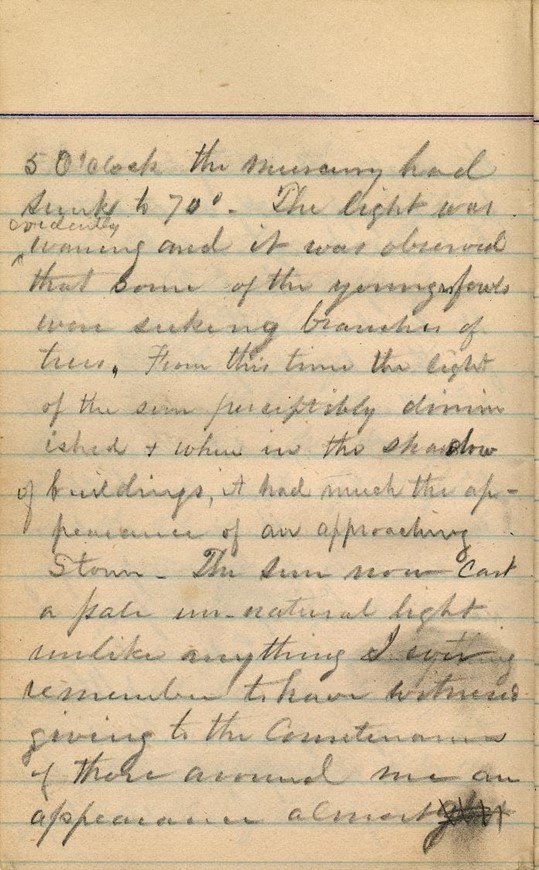
Account of Corydon resident, 1869. Indiana Historical Society, SC1543
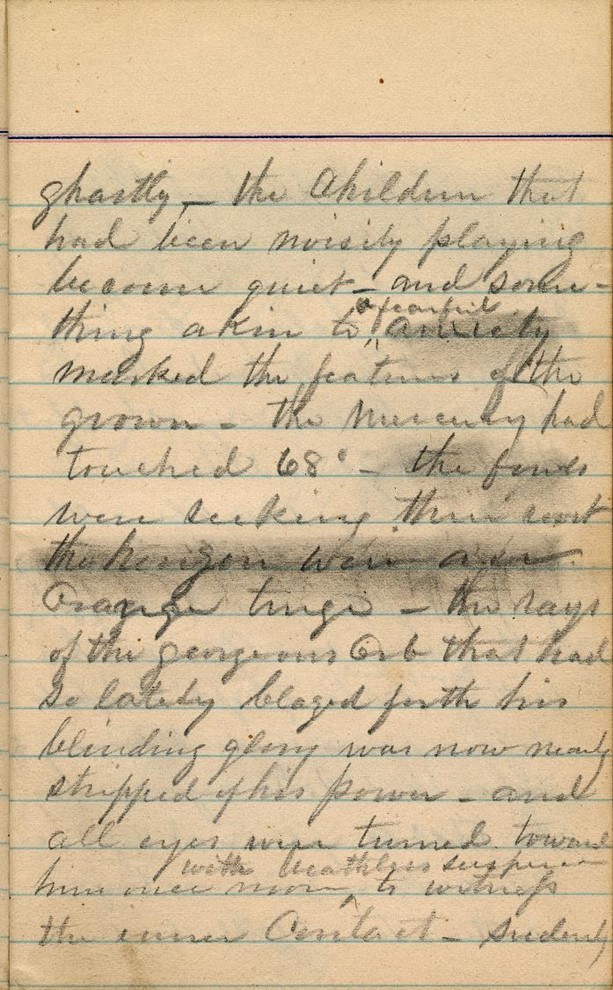
Account of Corydon resident, 1869. Indiana Historical Society, SC1543
The eclipse had a profound impact on many of those who witnessed the event. The diary of Gulielma Morris of Washington County states,
“The wonderful sight of the sun in eclipse was today. My eyes never beheld such a sight. My feelings were also touched with a sense of the Great and Governing power that rules the universe.”
The New Albany Daily Commercial included it on their 1870 Carrier’s Address, an annual reflection of the year before:
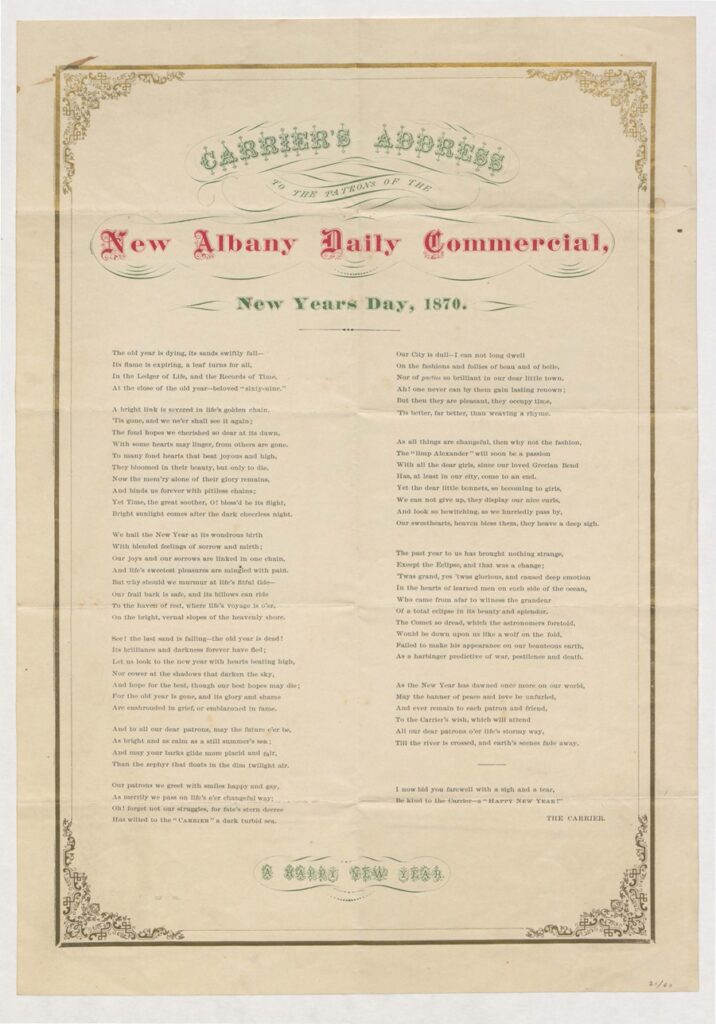

Unfortunately, the collection at IHS does not include any images taken in Indiana for the 1869 eclipse. However, we are fortunate to have photographs of later, partial eclipses. Indianapolis photographer, F.M. Lacey documented the partial eclipse in 1878 and Walter Carpenter, documented the partial eclipse in 1932.
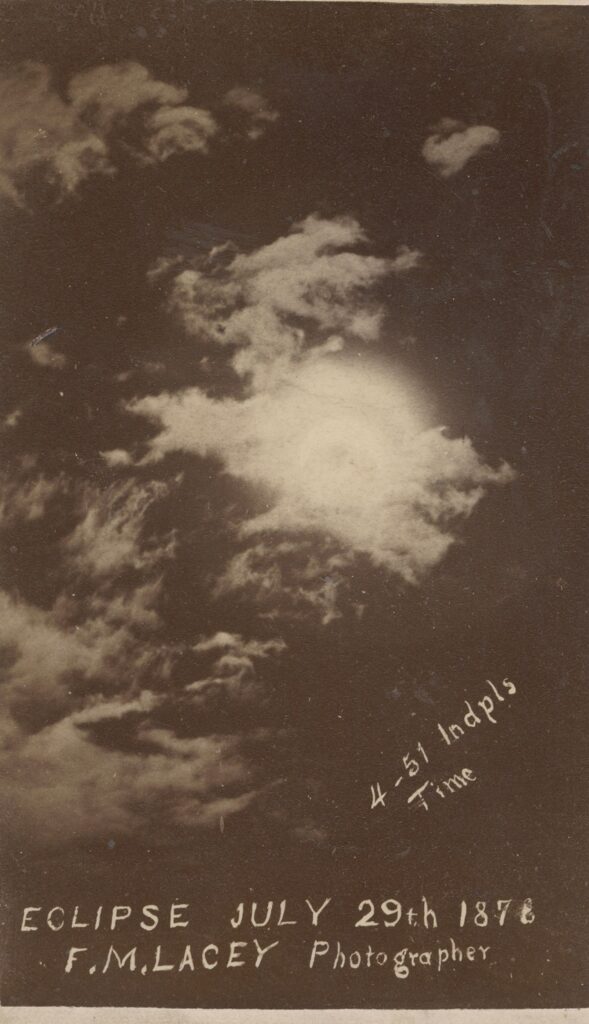
Solar eclipse on July 29, 1878, Indiana Historical Society, P0415

August 1932 eclipse pictures, Indiana Historical Society, P0236
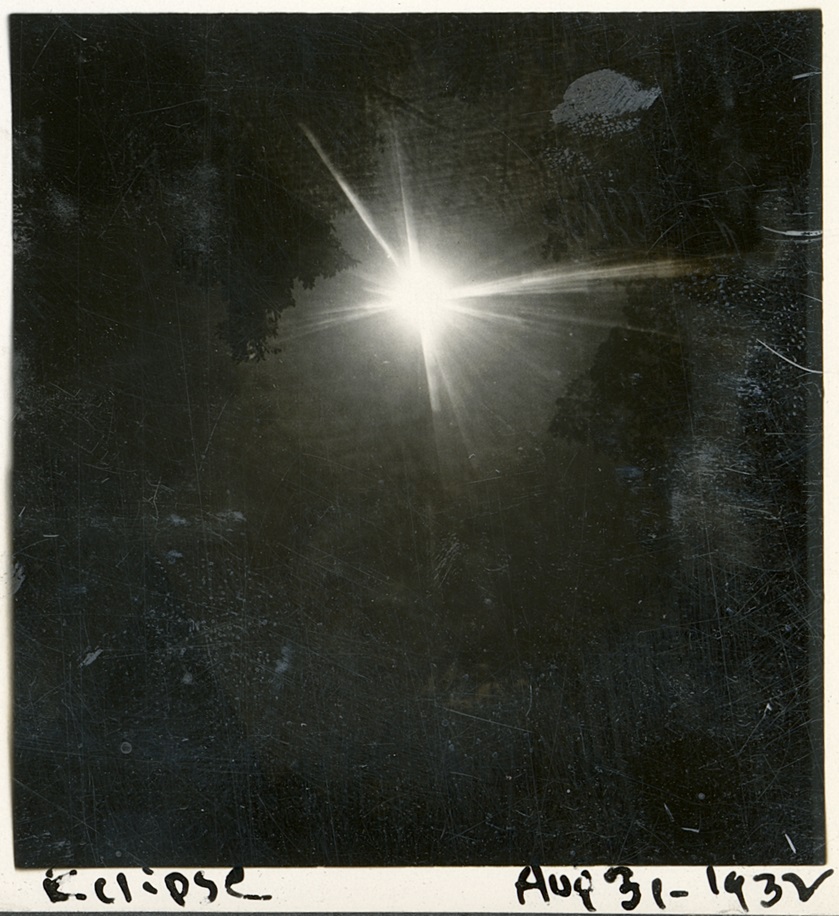
August 1932 eclipse pictures, Indiana Historical Society, P0236
Help us document the 2024 eclipse! Visit Collections Donation to learn how you can share your photographs and experiences with IHS.









